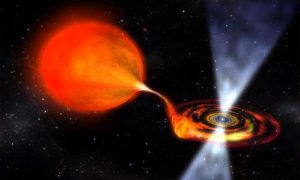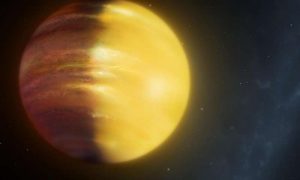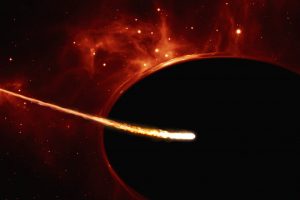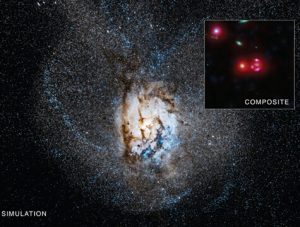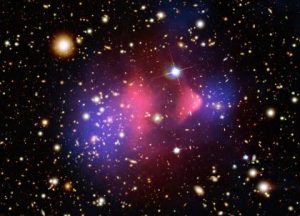Astronews
Banchetto Stellare
 L’insolita composizione di una stella suggerisce che, in una sorta di banchetto cosmico, abbia ingoiato alcuni dei suoi pianeti. Lo studio è stato condotto da un team internazionale di scienziati, fra i quali ricercatori dell’University of Chicago, che hanno scoperto un raro sistema planetario in cui risplende una stella particolarmente vorace e simile al nostro Sole. Continua a leggere
L’insolita composizione di una stella suggerisce che, in una sorta di banchetto cosmico, abbia ingoiato alcuni dei suoi pianeti. Lo studio è stato condotto da un team internazionale di scienziati, fra i quali ricercatori dell’University of Chicago, che hanno scoperto un raro sistema planetario in cui risplende una stella particolarmente vorace e simile al nostro Sole. Continua a leggere
Via Col Vento
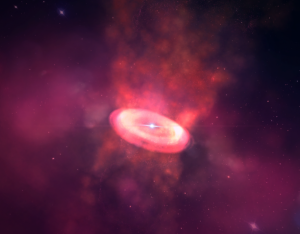 Vortici ventosi di gas accompagnano la nascita delle stelle. Questa è la conclusione di uno studio dei ricercatori del Niels Bohr Institute, University of Copenhagen, che hanno utilizzato il telescopio ALMA per osservare le fasi iniziali della formazione di un nuovo sistema solare. Continua a leggere
Vortici ventosi di gas accompagnano la nascita delle stelle. Questa è la conclusione di uno studio dei ricercatori del Niels Bohr Institute, University of Copenhagen, che hanno utilizzato il telescopio ALMA per osservare le fasi iniziali della formazione di un nuovo sistema solare. Continua a leggere
È possibile la vita su Proxima b?
 Uno studio del Blue Marble Institute of Space Science, pubblicato su Monthly Notices of the Royal Astronomical Society, analizza le condizioni favorevoli allo sviluppo della vita sul pianeta Proxima b, in orbita attorno alla stella più vicina al Sistema Solare, Proxima Centauri. Continua a leggere
Uno studio del Blue Marble Institute of Space Science, pubblicato su Monthly Notices of the Royal Astronomical Society, analizza le condizioni favorevoli allo sviluppo della vita sul pianeta Proxima b, in orbita attorno alla stella più vicina al Sistema Solare, Proxima Centauri. Continua a leggere
La Strana Coppia Stellare
Un astrofisico e un astrofilo hanno collaborato per rivelare sorprendenti dettagli di un sistema binario, composto da una pulsar millisecondo e una stella compagna. Le osservazioni, i cui risultati sono stati pubblicati su Astrophysical Journal, rappresentano la prima identificazione di macchie stellari e di un forte campo magnetico sulla stella compagna e forniscono indizi fondamentali per comprendere il comportamento e l’evoluzione di sistemi binari così particolari. Continua a leggere
Due nuovi esopianeti in formazione
Uno studio internazionale condotto da astronomi della Rice University, utilizzando le osservazioni del telescopio ALMA, ha analizzato la distribuzione di gas e polveri presenti nel disco attorno alla stella HD 163296, a circa 400 anni luce di distanza dalla Terra. Sono stati individuati tre solchi nel disco protoplanetario, regioni prive di polveri in cui potrebbero formarsi nuovi pianeti. Continua a leggere
Venti di rubini e zaffiri sull’esopianeta
Una nuova ricerca condotta dall’Università di Warwick ha rilevato segnali di possenti correnti ventose d’intensità variabile in un pianeta gassoso 16 volte più grande della Terra, ad oltre 1000 anni luce di distanza. Continua a leggere
Un buco nero in rapida rotazione divora una stella
Si riteneva che il lampo luminoso straordinariamente brillante visibile in una galassia remota, chiamato ASASSN-15lh, fosse la più brillante supernova mai osservata. Ma nuove rilevazioni effettuate da vari osservatori, tra cui ESO, hanno messo in dubbio questa classificazione. Un gruppo di astronomi ha ipotizzato che la sorgente sia un evento ancora più estremo e molto raro: un buco nero in rapida rotazione che sta facendo a pezzi una stella imprudente che si è avvicinata troppo. Continua a leggere
Tripudio di stelle in una lontana galassia
Una galassia distante, scoperta recentemente, si illumina del bagliore di una quantità straordinaria di stelle neonate, formandole ad un ritmo forsennato. La prolifica galassia, chiamata SPT 0346-52, si trova a 12,7 miliardi di anni luce dalla Terra ed è stata quindi osservata circa un miliardo di anni dopo il Big Bang. Continua a leggere
Ammassi di Galassie in Collisione
Molte galassie fanno parte di ammassi galattici, strutture cosmiche fra le più grandi nell’Universo, tenute insieme dalla gravità. La nostra Via Lattea, ad esempio, fa parte del Gruppo Locale, un insieme di una cinquantina di galassie fra le quali la più grande è la galassia di Andromeda. Il vasto ammasso di galassie più vicino a noi, ad una distanza di circa 50 milioni di anni luce, è l’Ammasso della Vergine, che ospita intorno ai 2000 oggetti. Continua a leggere
Il Destino Incerto della Terra
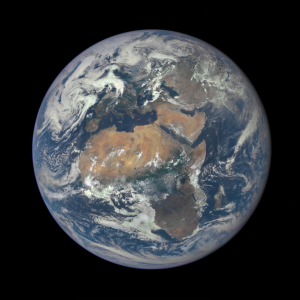 Cosa accadrà alla Terra quando, tra pochi miliardi di anni, il Sole sarà un centinaio di volte più grande di adesso? Un team internazionale di astronomi ha provato a rispondere a questa domanda osservando la stella L2 Puppis tramite il radiotelescopio ALMA. Cinque miliardi di anni fa questa stella era molto simile al nostro Sole. Continua a leggere
Cosa accadrà alla Terra quando, tra pochi miliardi di anni, il Sole sarà un centinaio di volte più grande di adesso? Un team internazionale di astronomi ha provato a rispondere a questa domanda osservando la stella L2 Puppis tramite il radiotelescopio ALMA. Cinque miliardi di anni fa questa stella era molto simile al nostro Sole. Continua a leggere
